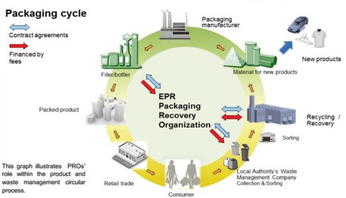Roll-to-Roll Equipment for Atmospheric Atomic Layer Deposition for Solar Applications
Presented by Raymond Knaapen, VDL Enabling Technologies Group
Amongst thin-film deposition techniques, Atomic Layer Deposition (ALD) has unique properties like high conformality, high layer quality and thickness control down to Å level. Deposition rate, however, is very low in conventional ALD reactors. To achieve high throughput and to reduce costs, there have been recent developments regarding spatial ALD. Whereas in conventional ALD, precursors are dosed separated in time using a purge or pump step, in spatial ALD, precursors are dosed simultaneously and continuously at different physical locations. As purging is no longer needed, the spatial ALD process can be operated at much higher speeds, limited by layer deposition chemistry rather than pumping times. Thus, deposition rates exceeding 1 nm/s have been reported for spatial atmospheric ALD of Al2O3 [1]. This has led to the launch of high throughput, industrial scale ALD tools for surface passivation of crystalline silicon solar cells.
Usually, substrates in existing ALD applications are flat and rigid, like silicon wafers or glass plates. Performing spatial ALD on these substrates involves e.g. substrate reciprocation or rotation under a flat ALD injector head. Precursors are not allowed to come into contact with each other, other than on the substrate surface. Separation of precursors is achieved using gas bearing technology, which also enables small precursor chamber volumes.
Because of the increased throughput and decreased cost levels, new application fields are opening up for spatial ALD, such as flexible electronics, including system-in-foil, flexible displays, OLEDs and solar cells. Examples of layers are transparent oxide (semi)conductors (e.g. ZnO), moisture permeation barriers (e.g. Al2O3), and buffer layers in CIGS solar cells (e.g. Zn(O,S)).
A new type of atmospheric, spatial ALD reactor has been developed for deposition on flexible substrates [2]. Instead of a flat ALD injector head, a rotating drum is used to supply the precursor gases to slots at the peripheral surface of the drum, parallel to its rotation axis (see Fig. 1). The foil substrate is transported around the drum surface, where gas bearings are used to separate the foil from the drum as well as separate the different precursors. The foil being contactless enables the drum to rotate at high speed while the foil is slowly advancing. Thus every part of the foil surface will come into contact with a predefined number of precursor cycles. Each individual precursor pair cycle will deposit one monolayer of e.g. Al2O3. In the current design, the drum has six precursor slot pairs at its outer surface. Thus, when the drum rotates at a frequency of 1 Hz, the number of precursor pairs per second is approximately 6, for low foil traversing speeds. When the foil effectively covers ~50% of the drum surface, a ~20 nm thick layer of alumina can be applied in a continuous roll-to-roll process. Such layers can e.g. be used as moisture barrier.
This post is for paying members only
SubscribeAlready have an account? Log in

